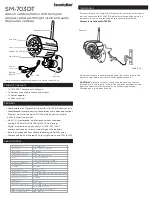
™
Page 24 of 67
3 Using the vLoc3 RTK-Pro
3. Using the vLoc3 RTK-Pro
3.1 Using the Receiver
Line Locating - Using the “Classic” Screen.
69.9
32.8kHz
58dB 2’7”
50mA
4G
3.2 Passive Locating
NOTE
The compass indicator is not active during a passive location.
Passive locating refers to the process of detecting signals that “naturally” occur on pipes and cables. These tend to fall into two
categories, radio signals, and power signals.
Radio signals
are created by low-frequency radio transmitters. These are used for broadcasting and communications. They
are positioned throughout the world. As the frequencies are very low, the signals tend to penetrate and hug the curvature of
the earth. When the signals cross a long conductor such as a pipe or cable, the signals are re-radiated. It is these re-radiated
signals that can be detected by the Radio mode.
Power signals
are created by mains power running in the supply cables. These signals are 50 or 60Hz, depending on the
country. For instance, the UK is a 50Hz power, but the USA will have 60Hz. When electrical power is distributed throughout the
network, some of the power finds its way back to the power station via the ground. These stray currents can jump onto pipes
and cables and also create power signals. Note that there has to be electrical current flowing to create a detectable signal. For
instance, a live cable that is not in use may not radiate a detectable signal. Also, a very well balanced cable, i.e., exactly the
same current flowing in live and neutral, will cancel out and may not create a signal. In practice, this is unusual as there are
usually enough imbalances in the cable to create a good detectable signal.
















































